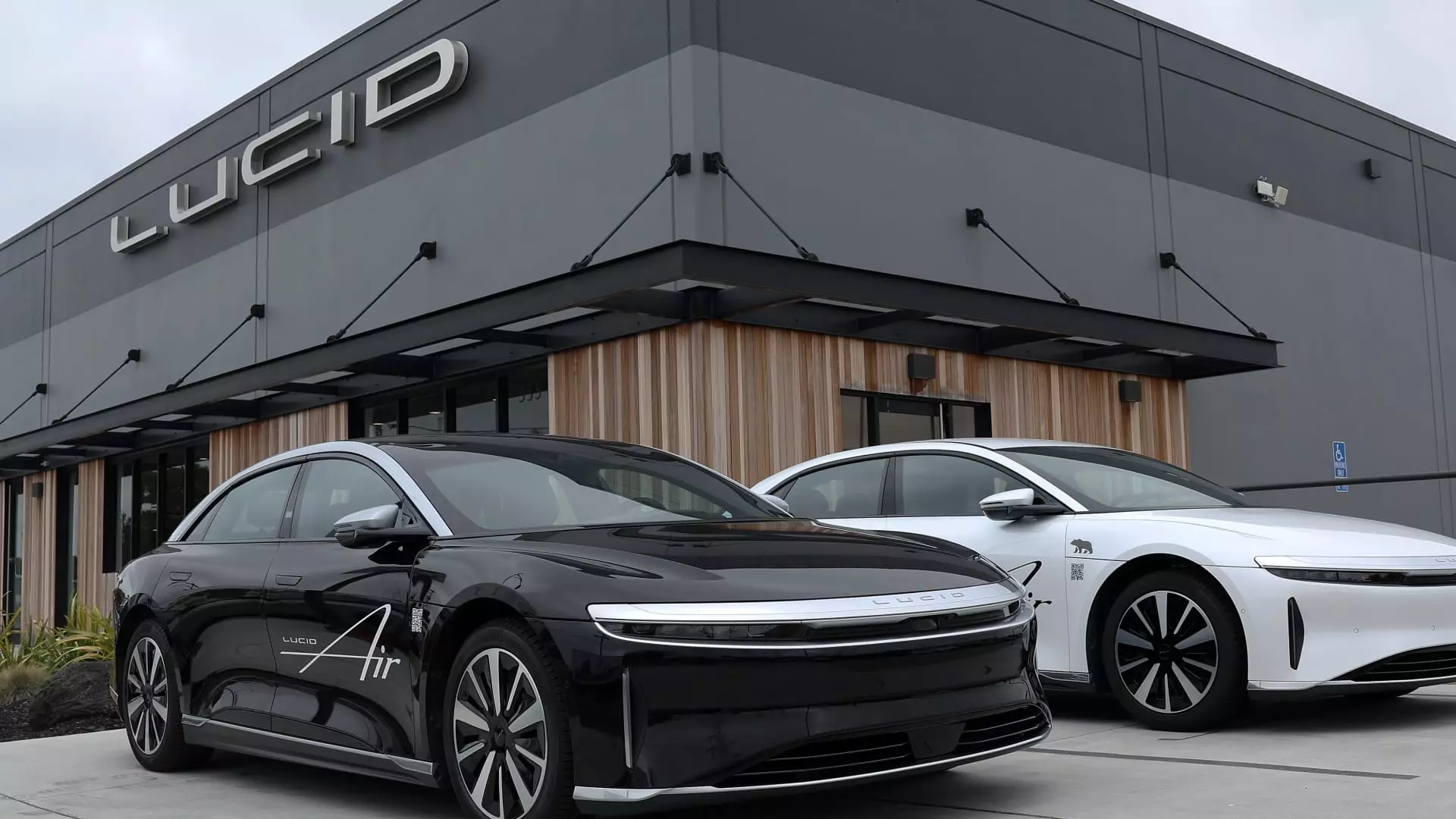Lucid Group’s recent third-quarter results reflect a subtle yet noteworthy advancement for the electric vehicle (EV) manufacturer. Despite the broader challenges facing the industry, including mounting losses and cash flow pressures, Lucid managed to slightly outperform Wall Street expectations, particularly in terms of financial performance indicators. The company reported a loss of 28 cents per share, outpacing the anticipated loss of 30 cents, while its revenue of $200 million surpassed forecasts of $198 million. This performance led to a significant uptick of over 8% in its stock price during after-hours trading, reassuring investors who have endured a tumultuous year. Ending the regular trading session at $2.22 per share, Lucid’s stock is still grappling with a 45% decline year-to-date, reflecting ongoing concerns over its financial viability and operational efficiency.
Despite managing to beat analysts’ expectations, Lucid’s financial situation reveals a troubling trend with increasing net losses. The company reported a net loss of nearly $993 million for the third quarter, a substantial rise from $631 million during the same period last year. However, it is essential to contextualize these figures: while losses have expanded, the rate of growth in operating costs has also been scrutinized. Significant increases in research and development costs (up 40.1% to $324.4 million) and selling, general, and administrative expenses (up 23.1% to $233.6 million) starkly contrast with decreased costs in revenue and restructuring, indicating a complex balance between investment for future growth and ongoing operational inefficiencies.
CEO Peter Rawlinson referred to this quarter as a “landmark” period, particularly emphasizing record delivery figures of 2,781 vehicles. Yet, to truly understand Lucid’s position within the market, one must highlight its ambitious plans. The company aims to produce approximately 9,000 vehicles this year, marking a 6.8% increase from 2023 levels. This strategy coincides with Lucid’s capital-intensive phase as they work to expand their manufacturing footprint, particularly with the ongoing expansion of their U.S. factory in Arizona and the development of a new plant in Saudi Arabia. Additionally, the imminent launch of the Gravity SUV further inflates both market expectations and operational pressures.
A pivotal element of Lucid’s current operations is their focus on liquidity. Ending the quarter with $5.16 billion in total liquidity provides a much-needed cushion, particularly in an industry marked by unpredictable cash flows. CEO Rawlinson’s characterization of the recent $1.75 billion stock offering as a “timely, strategic business decision” further underlines this financial strategy. This influx of capital is critical for sustaining ongoing operations and supporting future growth ambitions, especially as the firm approaches significant product launches and enhancements in its technology.
With the EV market increasingly demanding in both innovation and capital, Lucid is undertaking rigorous cost-control measures across its operation. Interim CFO Gagan Dhingra stated, “We are not leaving any corner. It’s across the board.” This holistic approach to cost reduction is imperative in enhancing operational efficiency and steering the company towards a more sustainable financial future. Despite their stated goal of $1.3 billion in capital expenditures for the year, the commitment to cutting costs bodes well for managing the financial impacts associated with high capital expenditure cycles.
Lucid Group’s third-quarter earnings report represents a delicate balance between present challenges and future aspirations. While the incremental improvements in operating performance and the positive market response signify a potential turning point, the company must remain vigilant in managing its finances and operational effectiveness amidst a backdrop of increased competition and market volatility. As the automotive industry pivots toward electrification, Lucid’s ability to deliver on its promises while maintaining financial health will be paramount to its survival and ongoing growth in a fiercely competitive landscape.

